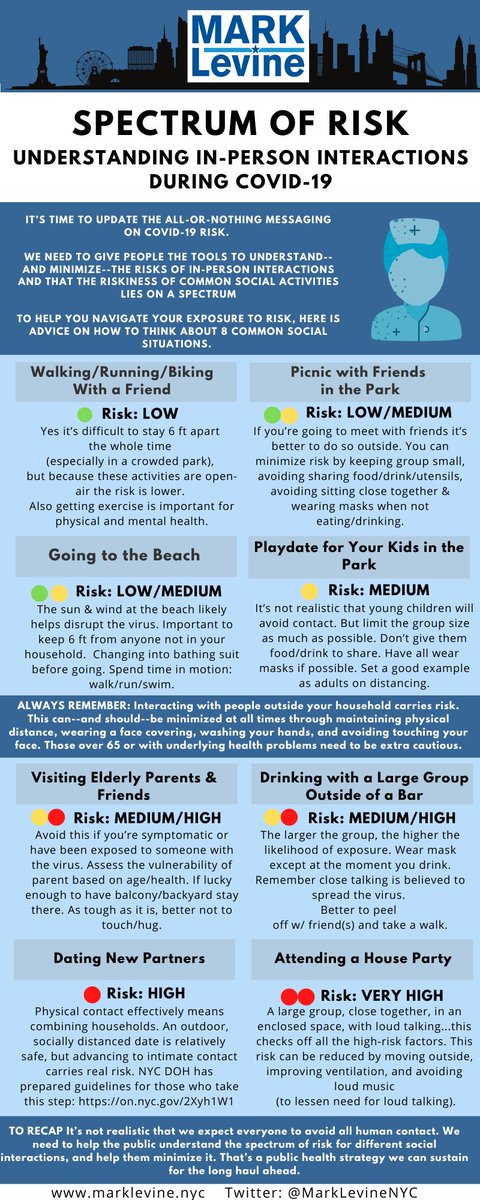In the real world we need to give people the tools to understand--and minimize--the risks of in-person interactions.
The CDC has failed to offer this kind of guidance. So here's advice on how to think about 9 social situations. 1/
But remember this is a deadly disease, and can hit anybody. Those over 65 or with underlying health problems need to be extra cautious. 3/
==> Risk: LOW
* Yes it’s difficult to stay 6 ft apart the whole time (especially in a crowded park), but because these activities are open-air the risk is lower. Also getting exercise is important for physical and mental health. 4/
==> Risk: LOW/MED
* If you’re going to meet w/ friends it’s much better to do so outside. You can minimize risk by keeping group small, avoiding sharing food/drink/utensils, avoiding sitting close together, and wearing masks when not eating/drinking. 5/
==> Risk: LOW/MEDIUM
* The sun/wind at the beach likely helps disrupt the virus. Important to keep 6 ft from anyone not in your household. Minimize use of public restrooms by changing into bathing suit before going. Spend time in motion: walk/run/swim. 6/
==> Risk: MEDIUM
* It’s not realistic that young children will avoid contact. But limit the group size as much as possible. Don’t give them food/drink to share. Have all wear masks if possible. Set a good example as adults on distancing. 7/
==> Risk: MEDIUM/HIGH
* Avoid this if you’re symptomatic or have been exposed to someone w/ the virus. Assess vulnerability of parent based on age/health. If lucky enough to have balcony/backyard stay there. As tough as it is, better not to touch/hug. 8/
==> Risk: MEDIUM/HIGH
* The larger the group, the higher the likelihood of exposure. Wear mask except at the moment you drink. Remember close talking is believed to spread the virus. Better to peel off w/ friend(s) and take a walk. 9/
==> Risk: HIGH
* You can expand your bubble to include friends who commit to avoid all other contact, but problem is if anyone violates the pact, everyone is exposed. Still a flawed pact is better than unrestrained interaction outside of household. 10/
==> Risk: HIGH
* Physical contact effectively means combining households. An outdoor, socially distanced date is relatively safe, but advancing to intimate contact carries real risk. NYC DOH has prepared guidelines for those who take this step:
www1.nyc.gov/assets/doh/dow… 11/
==> VERY HIGH
* A large group, close together, in an enclosed space, with loud talking...this checks off all the high-risk factors. This high risk can be reduced by moving outside, improving ventilation, and avoiding loud music (to lessen need for loud talking). 12/




